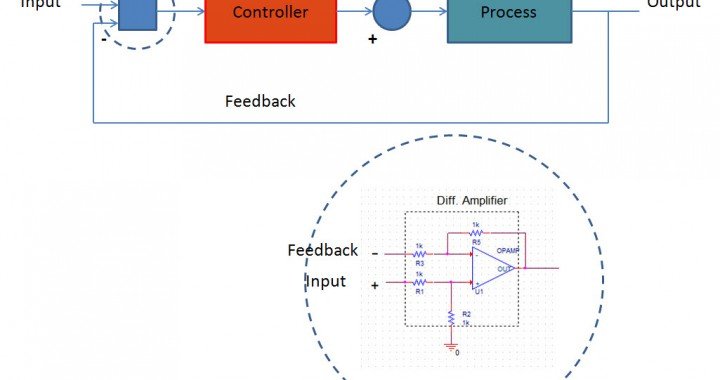Ing. Cristoforo Baldoni
Exploring the domain of Control Systems using SPICE Simulation, this article offers essential principles for designing and analyzing Feedback and Control Systems. Control Systems theory, a cornerstone of engineering and automation, involves the study of dynamic systems and their manipulation to achieve desired outcomes. These systems are omnipresent in our modern industrial technological world, seamlessly integrated into everyday devices. They play a vital role in processes as diverse as the precise positioning of a Reader’s laser, the intricate control of a hard disk head’s movement, and even the numerous biological control systems orchestrating our bodily functions.
Control Systems theory involves understanding how systems respond to various inputs and disturbances, and how to design controllers that shape these responses to achieve desired goals. These goals can include stability, accuracy, speed, and overall performance optimization. Whether it’s managing the temperature of an oven, stabilizing the flight of an aircraft, or controlling the speed of a motor, the principles of Control Systems theory provide the framework to analyze, design, and optimize these dynamic processes.
As we navigate through this article, we’ll begin by introducing the basic concepts that underpin Control Systems theory. From there, we’ll seamlessly transition into exploring how these theories come to life through the application of SPICE simulation. Our journey includes the evaluation of the Open Loop Transfer Function using the versatile tool of PSPice, providing hands-on insights into the practical implementation of control strategies. Whether you’re a novice eager to comprehend the foundations or an enthusiast seeking to refine your expertise, this article offers a holistic perspective on the symbiotic relationship between Control Systems theory and the power of SPICE Simulation.
Topics Covered:
1. Processes, Open Loop and Closed Loop Control Systems (Feedback Systems).
2. Generic Closed Loop Schematic of Feedback Systems.
3. Physycal Processes Modeling, Differential Equations and Laplace Transform Simplification.
4. Transfer Function: Understanding Poles, Zeros and their Phisical Significance.
5. Natural and Forced Response: Residues Calculation, Simplification of identical Zeros and Poles, Dominant Poles.
6. Process Stability.
7. Steady State Erro and Systems Types.
8. Transfer Function through Bode Diagram Analysis. Examination of the Open Loop Transfer Function using SPICE Simulation.

